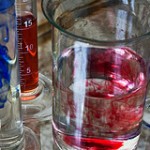U.S. Students Show Shallow Understanding On National Science Exam
Most U.S. students can draw the correct conclusions from a science experiment, but fewer students were able to defend those findings with data.
Those are the conclusions from the first-ever National Assessment of Education Progress science exam that added both hands-on experiments and computer exercises to test 2,000 4th, 8th and 12th graders across the country.
One section of the 4th grade exam had students measure volume change as ice melts. Seventy-one percent of those tested accurately measured the change in volume. But only 15 percent were able to back up their conclusion with data.
Officials with the National Assessment Governing Board, which oversees the NAEP, were concerned U.S. students struggled with more difficult problem-solving.
“Science is fundamental to education because it is through scientific inquiry that students understand how to solve problems and ultimately how to learn,” said National Assessment Governing Board director David Driscoll. “So it’s tragic that our students are only grasping the basics and not doing the higher-level analysis and providing written explanations needed to succeed in higher education and compete in a global economy.”
Other findings:
- There are gaps in average scores for all tasks between students from low-income families (those eligible for free and reduced-price lunch) and those from higher-income families.
- There are gaps by race/ethnicity. White and Asian/Pacific Islander students outscored their black and Hispanic classmates in all grades tested.
- Fourth and 12th grade Hispanic students scored higher than their black peers on interactive computer tasks and hands-on tasks.
- Female students outscored males on the hands-on tasks, but males scored higher on the traditional paper-and-pencil assessment. There was no gender gap for interactive computer tasks.
Read the report:

